Our Methodologies

Trauma Release Exercises
The human body possesses an organic ability to heal.
TRE (Trauma Release Exercises) is a body-centered approach to healing trauma that involves a series of simple exercises designed to release tension and stress stored in the body. The exercises involve a series of movements that activate a natural reflex mechanism in the body, causing the muscles to shake or tremble. This tremor is a natural response to stress and helps to release pent-up tension and trauma stored in the body.
The theory behind TRE is that trauma is not just a psychological experience but also a physiological one. Trauma can become stuck in the body, leading to chronic pain, tension, and other physical symptoms. By releasing this tension through tremors, TRE can help to alleviate the physical symptoms of trauma and promote healing.
TRE was developed by Dr. David Berceli, a trauma therapist and humanitarian worker, and emerged out of his work with large traumatized communities while living in Africa and the Middle East. His observation and exploration led him to understand that this natural shaking/vibrating response appears to be the body’s own built-in system for quieting down the brain and releasing muscular tension as a way of healing itself from chronic stress, tension, and trauma.
Trauma Release Exercises have been used to help individuals recover from a variety of traumas, including natural disasters, combat trauma, and childhood abuse. The practice has gained popularity in recent years and is now used by therapists, social workers, and other healing professionals in over 70 Countries.
As the process uses a series of simple exercises to invoke tremors that are then able to be self-regulated; it does not require talking about or recalling past events and does not require the ongoing assistance of a therapist for the vast majority of people; meaning the process can be used on your own on an ongoing basis to support and enhance other approaches.
Benefits of TRE® Include:
- Relief of ongoing stress or tension
- Pain relief
- Release of emotional or physical trauma
- Promotes overall sense of calm and relaxation
- Reduction of anxiety and depersonalization in the body
- Cessation of Panic attacks
Robert Espiau is certified in TRE through TRE International.

Brainspotting
Brainspotting functions as a neurobiological tool to support the clinical healing relationship. There is no replacement for a mature, nurturing therapeutic presence and the ability to engage another suffering human in a safe and trusting relationship where they feel heard, accepted, and understood.
Brainspotting gives us a tool, within this clinical relationship, to neurobiologically locate, focus, process, and release experiences and symptoms that are typically out of reach of the conscious mind and its cognitive and language capacity.
Brainspotting works with the deep brain and the body through its direct access to the autonomic and limbic systems within the body’s central nervous system. Brainspotting is accordingly a physiological tool/treatment which has profound psychological, emotional, and physical consequences.
It is theorized that Brainspotting taps into and harnesses the body’s innate self-scanning capacity to process and release focused areas (systems) which are in a maladaptive homeostasis (frozen primitive survival modes). This may also explain the ability of Brainspotting to often reduce and eliminate body pain and tension associated with physical conditions.

Emotionally Focused Couples Therapy
Emotionally Focused Couples Therapy has over 25 years of research. Emotionally Focused Couples Therapy (EFT) is a form of couples therapy that aims to help couples improve the emotional bond between them. The therapy focuses on identifying and resolving emotional issues that may be causing difficulties in the relationship. EFT is grounded in attachment theory, which suggests that humans have an innate need for emotional attachment and that the quality of attachment in a relationship is central to emotional well-being.
In EFT, the therapist works with both partners to help them identify and express their emotions, needs, and fears in a safe and non-judgmental environment. The therapist also helps the couple understand how their negative patterns of interaction may be undermining their emotional connection and offers guidance on how to change these patterns.
Studies have shown that EFT is highly effective in improving relationship satisfaction, reducing relationship distress, and promoting positive change in relationships. One meta-analysis of 22 studies involving over 1,400 couples found that EFT had a large effect on relationship satisfaction and a moderate effect on reducing relationship distress. Another study found that couples who received EFT showed significant improvements in relationship satisfaction, relationship closeness, and communication skills compared to those who received other forms of therapy or no therapy at all.
EFT is a highly effective form of couples therapy for improving your emotional connection and reducing your relationship distress.

Sensorimotor Psychotherapy
Sensorimotor Psychotherapy® draws from somatic therapies, neuroscience, attachment theory, and cognitive approaches, as well as from the Hakomi Method.

CIMBS- Complex Integration of Multiple Brain Systems
CIMBS is a psychotherapy based on discoveries from current neuroscience about the brain and the nervous system. CIMBS is a process that strengthens vital, inborn abilities we all share, such as care, connection, play, pleasure and curiosity. The method involves a specialized collaboration with our patients which creates conditions that allow these capacities to emerge.
What we do as CIMBS therapists is slow way down the way we observe ourselves and practice the radical art of paying attention to what unfolds in the present moment with deep acceptance and curiosity. Crucial information about a patient’s challenges and strengths emerges through their physiology such as facial expression, vocal tone and gesture. Patients begin to experience themselves in new ways as they notice habitual physical responses and learn to recognize and change them. They become attuned to their body signals and get to know themselves with more accuracy and kindness.
By not lingering on the patient’s past, the CIMBS therapist and patient focus on what is manifesting in the moment. Like physical therapy, CIMBS doesn’t focus on how the injury occurred, it focuses on the injury as it impacts the present. Through the CIMBS process, the patient’s brain spontaneously “re-wires” towards health. This collaborative process empowers patients to navigate their lives in more intentional and satisfying ways.
CIMBS has been shown to work very effectively with Anxiety, Attachment trauma, Religious trauma, dissociative disorders, depersonalization, depression and shame reduction.

Focusing - A Mindfulness Based Somatic Therapy
If we could solve our problems just by thinking about them most of us would be problem-free since we often find ourselves obsessing about them. Focusing is a body-based practice that teaches how to mindfully attend to the knowledge found in your body and relate it to your mind. This significant information is often not accessed by most of us. Focusing is initially done best in relationship with a therapist guiding the practice. However, since the wisdom is from within your own body, the process can be learned as a tool to use by yourself. Focusing relies on the understanding that your body is continually sending you information about your life. Most of us often do not know how to listen to this information or make sense of it. By listening to what is called the “felt sense” and using the practices that help communicate with it, you can gain vital information that was previously unknown to the mind about problems and difficulties you are facing.
- Clearing a space
- Felt Sense
- Handle
- Resonating
- Asking
- Receiving
Utilizing these steps becomes more fluid as practiced in therapy and insights begin to emerge, not through the intellectual way we usually seek them. This process can help find the keys to overcome the obstacles that we find ourselves stuck in.

Samatha and Vipassana Meditation
Meditation has become a popular method these days in order to help calm the nervous system and develop concentration. While all of the practitioners at Seattle Trauma Counseling utilize mindfulness practices in our methods, Robert Espiau offers a unique perspective on Meditation much deeper than can be found in your average American yoga studio. Robert has been teaching traditional forms of meditation for over 30 years and offers a more in-depth training for those who are interested in entering into deep states of serenity called Samadhi.
Robert teaches Samatha and Vipassana meditation, which are two distinct forms of meditation practice that date back at least 2500 years. They were taught by the 1st Buddha and are the foundation of Buddhist meditation systems. Anyone who has a classical meditation training from within a Buddhist monastic tradition will have training in these two methods.Almost any book on early Buddhist meditation will tell you that the Buddha taught these two types of meditation: Samatha and Vipassana.
Samatha, which means tranquility, is a method fostering strong states of concentration eventually leading into what are called absorption states. Absorption into the stillness and silence of the mind, called Samadhi; (Buddha called this jhana). There are 8 states of concentrated absorption that the Budha taught. Robert can train you to enter into these states if you already have a regular daily meditation practice. These states contain qualities such as; joy, contentment, equanimity, and expansion of consciousness.
Vipassana — literally “clear-seeing,” but more often translated as insight meditation — is said to be a method that uses the foundation of tranquillity to foster a special insight into how perception functions at its root, as well as how karma forms and can be unraveled. There are many unusual applications of vipassana meditation once tranquility and concentration have been stabilized. This style of meditation can free a person from anxiety and allow them to accept the accept the painful and difficult experiences in life in a new way, thus leading the mind to release from suffering.
These two methods are taught and practiced by both Robert and Joshua Canady. Group Instruction and personal meditation training is also available.
Robert Espiau is available for those seeking Samadhi or Jhana training in meditation. You can contact him at his personal website here: https://www.heartcenteredtherapeutics.com/

Lucid Dreaming for the Treatment of Nightmares
Lucid dreaming is a phenomenon in which an individual becomes aware that they are dreaming and can often control the content of the dream. For many people, lucid dreaming is simply an enjoyable experience, allowing them to explore their subconscious in a safe and controlled manner. However, for those suffering from chronic nightmares, lucid dreaming has proven to be an effective treatment option.
Lucid dreaming is an intriguing phenomenon that has been studied by scientists for many years. According to a study by LaBerge and colleagues (2018), a lucid dream is characterized by the individual’s ability to be aware of their dreaming state while still experiencing the dream world as real. In a lucid dream, the individual is able to control and manipulate the dream world, leading to a range of possible outcomes, including solving problems, reducing stress, and improving creativity. While the exact mechanisms behind lucid dreaming are not fully understood, research has shown that lucid dreaming occurs during rapid eye movement (REM) sleep, which is the stage of sleep in which most dreaming occurs (LaBerge, 1985).
While lucid dreaming has many potential benefits, one of the most promising applications of lucid dreaming is its potential to treat chronic nightmares. A study by Holzinger and Klösch (2019) found that lucid dreaming therapy is a promising treatment for recurrent nightmares, especially for patients who do not respond well to traditional treatments such as medication or cognitive-behavioral therapy. The authors of the study suggest that lucid dreaming therapy may be effective because it allows patients to confront their fears in a safe and controlled environment.
For individuals suffering from chronic nightmares, lucid dreaming has been shown to be an effective treatment option. Chronic nightmares are defined as frequent, disturbing dreams that cause distress or interfere with daily functioning (Krakow et al., 2001). These nightmares can be a symptom of various mental health conditions, including post-traumatic stress disorder (PTSD), depression, and anxiety.
Several studies have demonstrated the effectiveness of lucid dreaming in treating chronic nightmares. A study by Spoormaker and van den Bout (2006) found that a group of patients who received lucid dream therapy reported a significant reduction in nightmare frequency compared to a control group. Similarly, a study by Zadra and Donderi (2000) found that lucid dreamers were able to successfully change the outcome of their nightmares in a majority of cases.
The exact mechanisms behind how lucid dreaming works as a treatment for chronic nightmares are not fully understood. However, there are several theories. One theory suggests that lucid dreaming works by allowing individuals to confront and process the underlying emotions and memories that are causing their nightmares (LaBerge, 1985). By becoming aware that they are dreaming and able to control the content of their dreams, individuals are able to face their fears in a safe and controlled environment.
Some of our counselors at Seattle Trauma counseling have in depth training in Dream Work and have been working to use Dreams and Lucid dreaming for many years to resolve nightmares and to develop more personal insight in to the nature of reality and perception. Please let us know if you are looking for help with your dreams or nightmares.

Acceptance and Comittment Therapy
Acceptance and Commitment Therapy (ACT) is a type of psychotherapy based upon a method called mindfulness. Mindfulness is a method that helps one to separate ones awareness from critical and anxious thought patterns.
Mindfulness is a non-critical state of self-observation.; where you are observing yourself without judging or condemning what you see in yourself.
Mindfulness is simultaneously a state of concentration. You cannot be in a state of mindfulness without some effort of concentration being present.
In ACT, Mindfulness and Meditation are methods that help you accept the difficulties that come with life. One learns how to actively pay attention to one’s inner state and strives to observe moods rather than be controlled by them. This method has proven to be highly effective against chronic depression and hopelessness.
ACT, as a practical method, focuses on helping someone in 3 areas:
Accept your reactions and be present
Choose a valued direction
Take action.

Internal Family Systems
The model ascribes to our personality a multiplicity that is normal and views a unity of personality as myth. It posits that the human mind is made up of a variety of subpersonalities or “parts”. Parts can feel like thoughts or feelings or just dominant inner states. Internal family systems provides a non-pathological paradigm in which to view the human being. For example, I may recognize jealous or selfish parts of me which I don’t like; thus, view myself as a jealous and selfish person which lowers my self concept. However from the IFS point of view, just because I have jealous or selfish parts, doesn’t mean that the whole of my being is jealous and selfish. I can have loving and compassionate parts as well. In fact, instead of judging those parts, I can become curious about them which frees me to understand their purpose and perhaps release them from these roles.
The model also posits that every person has a Self which can and should lead the individual’s internal system. This Self is something that we learn to discover through the practice of mindfulness and is a connected to a non-critical state of self observation. To a different state of Being than we experience presently. This original self was present at birth and is the true essence of who we are. In the IFS model, the “Self” is our soul or “seat of consciousness.” It has all the “necessary qualities of leadership and agency, such as compassion, perspective, curiosity, acceptance and confidence.” The model also assumes that all parts want to play a constructive role in the life of the individual, but often are forced into extreme roles due to trauma or other destructive influences in the person’s environment. Even within their extreme roles, parts often cannot see the harm they are doing to the individual overall. In this work we help parts to being to communicate with one another and relate to one another in a new way. IFS is often used in the work with Dissociative Identity Disorder as a way to work compassionately to help parts better accept one another.

Jungian Depth Psychology and Psychodynamic Theory
“Until you make the unconscious conscious, it will direct your life and you will call it fate.” ― C.G. Jung
In most all of our approaches, we work with the psychodynamic approach in that we help you to come to an understanding of the underlying events in your life that are the causes of compulsive behaviors. This is important in order to help the bring into awareness the unconscious events that are triggers for anxiety. Panic attacks or relapse into addictions, for example, although it is not necessary to retell your story to work through trauma.
For more info on psychodynamic theory:

Intensives
Intensive Workshops are offered by Robert Espiau and Veronica Paige.
Intensives provide focused, uninterrupted therapeutic blocks of time to concentrate on therapeutic goals and healing without the constraints of a typical therapy session. Intensives can be customized for the needs of an individual or group. They can last one to three days, six to eight hours daily with nightly homework. They can also be online weekly or monthly meetings.
Intensives are designed to help individuals or couples who are in crisis, as well as those who want to break through barriers that keep them stuck in old problems and patterns. It provides a blueprint for those who feel they need a jump start on traditional therapy. Intensives are designed to identify the problem, explore the core, and provide therapy and experiential experiences to heal and change lives.
Traditional therapy provides direction, guidance and growth. The usual fifty-minute session allows for about thirty minutes of therapy since the beginning and ending of each session takes time. This means that working through trauma or any issues can be a very slow process.
When a person is in crisis or wants more intense therapy than just one or two sessions per week, an Intensive is a great alternative. Intensives provide uninterrupted therapy that allows for greater, more expansive exploration and healing. Intensives combine talk therapy with experiential activities that include art therapy, guided imagery, recurrent theme exploration through timelines and other modalities, parts work, and somatic experiencing to name a few. The concentration of time, along with diverse therapeutic interventions, provides a more comprehensive healing experience.
Clients schedule an Intensive by deciding on the goals of therapy with Robert and Veronica and then planning the amount of time needed to address the objectives of therapy. The client then makes plans to come to Washington or Thailand for the Intensive. Travel arrangements and hotel accommodations are made by the client. Recommendations will be given, if needed. To inquire about or schedule an Intensive go to the contact section.
